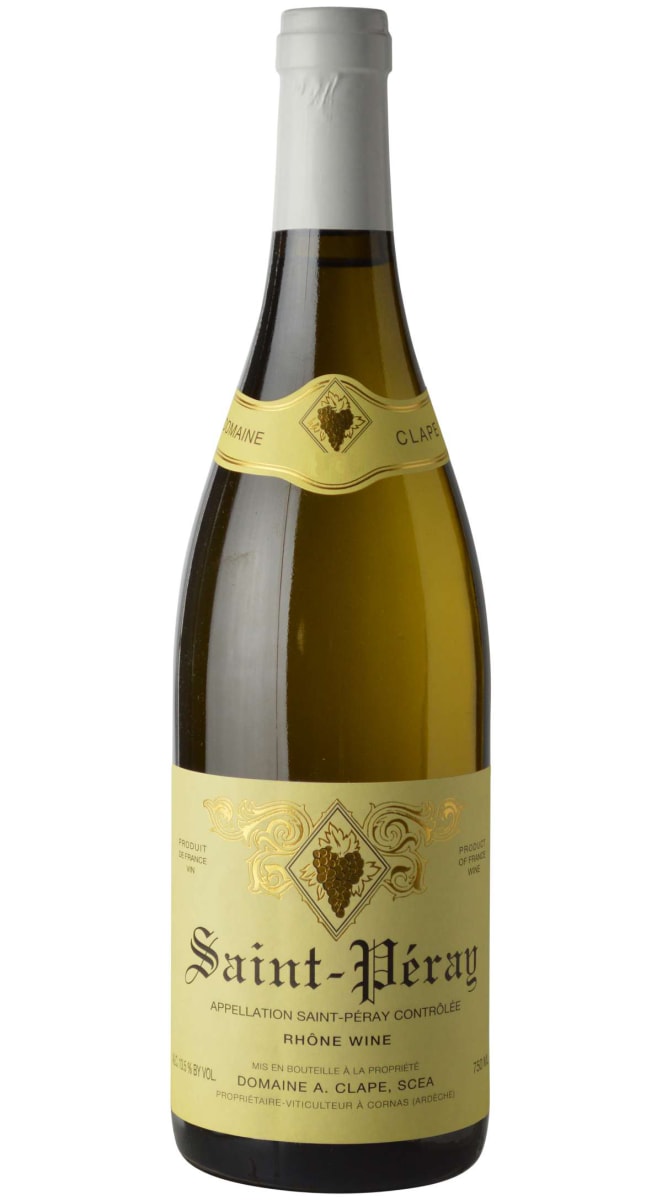Auguste Clape Saint Peray Blanc 2018
- Decanter
-
Jeb
Dunnuck



Product Details
Your Rating
Somm Note
Winemaker Notes
Wine is fermented in cement tanks and at least one foudre. Aged 8 months in stainless steel. Fined, but not filtered.
Professional Ratings
-
Decanter
Delightfully floral with flinty pear aromas. This is medium- to full-bodied, with good acidity and brightness of flavour into the finish. A vibrant and fresh style with no overt oak influence that is slightly stricter in style than an average year, and even better for it. A mix of old (60-year-old) vines and young (7-year-old) vines, all vinified in oak, no stainless steel.
-
Jeb Dunnuck
The white from this estate is underrated, and readers should snatch up bottles if given a chance. The 2018 Saint-Péray is about as textbook as they come, offering beautiful freshness and complexity paired with richness, minerality, and length. With lots of stone fruits, flowers, and saltiness, it’s ideal for the dinner table and will keep for at least 4-6 years.
Other Vintages
2021- Decanter
-
James
Suckling
-
Robert
Parker




In the world of wine, there are many good winegrowers. However, there are only a very select few who are truly great, and Auguste Clape will go down in history as one of the greats. A proud and uncompromising pioneer of fine winemaking in the Northern Rhône, his Syrahs from the cru of Cornas have earned their place among the most celebrated wines of France. The Clapes have been vignerons for many generations, but the infamous grower strikes of 1906 and 1907 forced Auguste's grandfather out of the Languedoc and into the Northern Rhône to start anew from practically nothing. The Clapes rebuilt their fortunes, terrace by terrace, along the steep, western slopes of the Rhône River. Without pretense or fanfare, Auguste, the former mayor of Cornas, was a stately picture of grace and magnanimity—a no-nonsense wise man who never rested on his laurels and sought to better himself and his wines each year until his passing in 2018 at the age of 93. Today, his son, Pierre-Marie, and grandson, Olivier, carry on his legacy with honor and integrity.

Full-bodied and flavorful, white Rhône blends originate from France’s Rhône Valley. Today these blends are also becoming popular in other regions. Typically some combination of Grenache Blanc, Marsanne, Roussanne and Viognier form the basis of a white Rhône blend with varying degrees of flexibility depending on the exact appellation. Somm Secret—In the Northern Rhône, blends of Marsanne and Roussanne are common but the south retains more variety. Marsanne, Roussanne as well as Bourboulenc, Clairette, Picpoul and Ugni Blanc are typical.

A long and narrow valley producing flavorful red, white, and rosé wines, the Rhône is bisected by the river of the same name and split into two distinct sub-regions—north and south. While a handful of grape varieties span the entire length of the Rhône valley, there are significant differences between the two zones in climate and geography as well as the style and quantity of Rhône wines produced. The Northern Rhône, with its continental climate and steep hillside vineyards, is responsible for a mere 5% or less of the greater region’s total output. The Southern Rhône has a much more Mediterranean climate, the aggressive, chilly Mistral wind and plentiful fragrant wild herbs known collectively as ‘garrigue.’
In the Northern Rhône, the only permitted red variety is Syrah, which in the appellations of St.-Joseph, Crozes-Hermitage, Hermitage, Cornas and Côte-Rôtie, it produces velvety black-fruit driven, savory, peppery red wines often with telltale notes of olive, game and smoke. Full-bodied, perfumed whites are made from Viognier in Condrieu and Château-Grillet, while elsewhere only Marsanne and Roussanne are used, with the former providing body and texture and the latter lending nervy acidity. The wines of the Southern Rhône are typically blends, with the reds often based on Grenache and balanced by Syrah, Mourvèdre, and an assortment of other varieties. All three northern white varieties are used here, as well as Grenache Blanc, Clairette, Bourbelenc and more. The best known sub-regions of the Southern Rhône are the reliable, wallet-friendly Côtes du Rhône and the esteemed Châteauneuf-du-Pape. Others include Gigondas, Vacqueyras and the rosé-only appellation Tavel.
